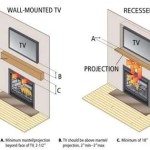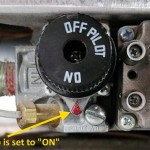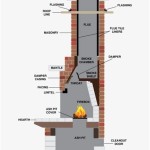Understanding Outdoor Fireplace Vent Covers
Outdoor fireplaces offer a significant enhancement to outdoor living spaces, providing warmth, ambiance, and a focal point for gatherings. However, the longevity and performance of an outdoor fireplace can be significantly impacted by weather elements. One critical component often overlooked in maintaining an outdoor fireplace is the fireplace vent cover. This article delves into the importance, types, selection criteria, installation, and maintenance of outdoor fireplace vent covers.
The Importance of Outdoor Fireplace Vent Covers
Outdoor fireplaces are exposed to a harsh environment, including rain, snow, wind, and debris. Without adequate protection, these elements can infiltrate the fireplace system, leading to a range of potential problems. Moisture, in particular, is a significant threat. Water entering the chimney or firebox can cause rust, corrosion, and even structural damage over time. Freeze-thaw cycles can exacerbate these issues, causing cracks and weakening the mortar joints. Debris, such as leaves, twigs, and animal nests, can accumulate within the chimney, creating obstructions that impede airflow and potentially pose a fire hazard.
A properly installed outdoor fireplace vent cover provides a crucial barrier against these elements, protecting the fireplace from moisture, debris, and pests. This protection extends the lifespan of the fireplace, reduces the need for frequent repairs, and ensures optimal performance. Furthermore, a vent cover can play a role in preventing backdrafts, which can occur when wind forces exhaust back down the chimney and into the outdoor living space. This is not only an inconvenience but can also introduce smoke and potentially harmful gases into the area.
The absence of a functional vent cover can lead to costly repairs. Water damage can compromise the structural integrity of the chimney, requiring extensive masonry work. Blocked flues can reduce the efficiency of the fireplace, making it harder to start and maintain a fire. Animal infestations can also cause damage and create unsanitary conditions. Therefore, investing in a high-quality outdoor fireplace vent cover is a proactive measure that can save homeowners significant money and effort in the long run.
Types of Outdoor Fireplace Vent Covers
Outdoor fireplace vent covers are available in a variety of materials, designs, and sizes to suit different fireplace types and aesthetic preferences. Understanding the different options is crucial for selecting the appropriate cover for a specific outdoor fireplace.
Material Types:
- Stainless Steel: Stainless steel vent covers are a popular choice due to their durability, corrosion resistance, and aesthetic appeal. Stainless steel is able to withstand harsh weather conditions and requires minimal maintenance. Different grades of stainless steel are available, with higher grades offering superior resistance to rust and corrosion.
- Galvanized Steel: Galvanized steel provides a cost-effective alternative to stainless steel. The galvanization process involves coating the steel with a layer of zinc, which protects it from rust and corrosion. While galvanized steel is less durable than stainless steel, it can still provide adequate protection for outdoor fireplaces in many climates.
- Copper: Copper vent covers offer a distinctive aesthetic appeal and are known for their longevity and resistance to corrosion. As copper ages, it develops a patina, which adds to its character and charm. However, copper vent covers are generally more expensive than stainless steel or galvanized steel options.
- Aluminum: Aluminum vent covers are lightweight and resistant to rust, making them suitable for some outdoor fireplace applications. However, aluminum is less durable than steel or copper and may be more susceptible to damage from strong winds or heavy snow.
Design Types:
- Chimney Caps: Chimney caps are designed to fit over the top of the chimney flue, providing protection from rain, snow, and debris. They typically feature a mesh screen to prevent animals from entering the chimney. Chimney caps are available in various shapes and sizes to accommodate different flue dimensions.
- Ventilated Covers: Ventilated covers feature strategically placed openings that allow for proper airflow while preventing the entry of rain and debris. These covers are designed to minimize the risk of backdrafts and ensure efficient combustion.
- Decorative Covers: Decorative covers combine functionality with aesthetic appeal, adding a touch of style to the outdoor fireplace. These covers may feature intricate designs or embellishments that complement the overall design of the outdoor living space.
- Custom Covers: Custom vent covers can be fabricated to meet specific requirements or preferences. This option is particularly useful for fireplaces with unique dimensions or design features.
The choice of material and design should be based on factors such as the local climate, budget, aesthetic preferences, and the specific requirements of the outdoor fireplace.
Selecting the Right Outdoor Fireplace Vent Cover
Choosing the right outdoor fireplace vent cover requires careful consideration of several factors to ensure optimal protection and performance. Key selection criteria include size, material, design, and local climate conditions.
Size and Fit:
Accurate measurements of the chimney flue are crucial for selecting a vent cover that fits properly. The vent cover should be sized to completely cover the flue opening while allowing for adequate airflow. If the vent cover is too small, it may not provide sufficient protection from rain and debris. If it is too large, it may not fit securely and could be susceptible to wind damage. It is recommended to consult with a professional to ensure accurate measurements and proper fit.
Material Durability:
The material of the vent cover should be chosen based on the local climate and the expected level of exposure to weather elements. In areas with heavy snowfall or frequent storms, stainless steel or copper may be the best choice due to their superior durability and corrosion resistance. In milder climates, galvanized steel or aluminum may be adequate. It is important to consider the long-term cost of the vent cover, including potential maintenance and replacement expenses. A higher-quality material may represent a better investment in the long run.
Design Features:
The design of the vent cover should be chosen based on the specific needs of the outdoor fireplace and the aesthetic preferences of the homeowner. Ventilated covers are recommended for fireplaces that are prone to backdrafts. Decorative covers can enhance the overall appearance of the outdoor living space. It is important to ensure that the design of the vent cover does not impede airflow or create obstructions within the chimney.
Local Climate Considerations:
The local climate plays a significant role in determining the best type of vent cover for an outdoor fireplace. In areas with high winds, it is important to choose a vent cover that is securely attached and can withstand strong gusts. In areas with heavy snowfall, it is important to choose a vent cover that can support the weight of the snow without collapsing or becoming damaged. In coastal areas, it is important to choose a vent cover that is resistant to salt air, which can accelerate corrosion.
By carefully considering these factors, homeowners can select an outdoor fireplace vent cover that provides optimal protection, performance, and aesthetic appeal.
Installation and Maintenance of Outdoor Fireplace Vent Covers
Proper installation and regular maintenance are essential for ensuring the long-term performance and effectiveness of an outdoor fireplace vent cover. Incorrect installation can compromise the protective capabilities of the cover, while neglecting maintenance can lead to corrosion, damage, and reduced airflow.
Installation Procedures:
The installation of an outdoor fireplace vent cover should be performed by a qualified professional. This ensures that the cover is properly sized, securely attached, and positioned to provide optimal protection. Prior to installation, the chimney flue should be inspected for any damage or obstructions. Any necessary repairs should be performed before installing the vent cover. The vent cover should be securely attached to the chimney flue using appropriate fasteners. The type of fasteners will depend on the material of the chimney flue and the vent cover. It is important to use fasteners that are resistant to corrosion. After installation, the vent cover should be inspected to ensure that it is properly aligned and securely attached.
Regular Maintenance:
Outdoor fireplace vent covers should be inspected regularly for signs of damage, corrosion, or blockage. The frequency of inspections will depend on the local climate and the level of exposure to weather elements. In general, vent covers should be inspected at least once a year, preferably in the spring after the winter season. During inspections, remove any debris, such as leaves, twigs, and animal nests, from the vent cover. Check for signs of rust or corrosion and address any issues promptly. If the vent cover is damaged, it should be repaired or replaced as soon as possible. Lubricate any moving parts, such as hinges or dampers, to ensure smooth operation. Avoid using harsh chemicals or abrasive cleaners, as these can damage the vent cover. Clean the vent cover with mild soap and water. Ensure the vent cover is completely dry after cleaning to prevent rust.
Professional Inspections:
In addition to regular maintenance, it is recommended to have outdoor fireplaces and vent covers inspected by a qualified professional on a regular basis. A professional inspection can identify potential problems that may not be apparent during routine maintenance. A professional can also perform more thorough cleaning and repairs, as needed. The frequency of professional inspections will depend on the local climate and the usage of the fireplace.
By following these installation and maintenance guidelines, homeowners can extend the lifespan of their outdoor fireplace vent covers and ensure their continued protection and performance.

Termination Cap Cover For Direct Vent Fireplace Draft Stopper

How To Hide Unsightly Outdoor Vents With Repurposed Doors Interior Frugalista

How To Hide Unsightly Outdoor Vents With Repurposed Doors Interior Frugalista

Termination Cap Cover For Direct Vent Fireplace Draft Stopper

Gas Fireplace Exterior Vent Can I Paint The Protective Cage

Termination Cap Cover For Direct Vent Fireplace Draft Stopper

Bug Proofing A Direct Vent Fireplace Doityourself Com Community Forums

Master Flow 4 In Fresh Air Vent Fav4 The Home Depot

Termination Cap Cover For Direct Vent Fireplace Draft Stopper

Termination Cap Cover For Direct Vent Fireplace Draft Stopper
Related Posts








